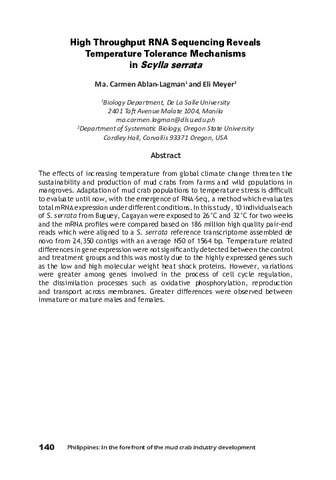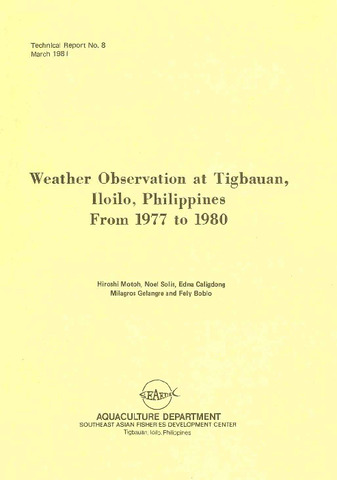Changes in Na+, K+-ATPase activity and gill chloride cell morphology in the grouper Epinephelus coioides larvae and juveniles in response to salinity and temperature
- Global styles
- MLA
- Vancouver
- Elsevier - Harvard
- APA
- Help

View/
Date
2000Page views
1,043ASFA keyword
AGROVOC keyword
Metadata
Perlihat publikasi penuhCited times in Scopus
Share
Abstract
The activity of the enzyme Na+, K+-ATPase and morphological changes of gill chloride cells in grouper, Epinephelus coioides larvae and juveniles were determined 6–48 h after abrupt transfer from ambient rearing conditions (30–32 ppt, 26.5–30°C) to different salinity (8, 18, 32, 40 ppt) and temperature (25, 30°C) combinations. Na+, K+-ATPase activity in day 20 larvae did not change at salinities 8–32 ppt. Activity decreased significantly (P <0.01) after exposure to 40 ppt at 25–30°C, which was accompanied by an increase (P < 0.05) in density and fractional area of chloride cells. Enzyme activity in 40 ppt did not reach a stable level and larvae failed to recover from an osmotic imbalance that produced a low survival at 25°C and death of all larvae at 30°C. Enzyme activity and chloride cell morphology in day 40 groupers did not change in 8–40 ppt at 25°C and 8–32 ppt at 30°C. A significant decrease and a subsequent increase in Na+, K+-ATPase activity in 40 ppt at 30°C was associated with the increase in chloride cell density resulting in an increased fractional area but a decreased cell size. Enzyme activity and chloride cells of day 60 grouper were unaffected by abrupt transfer to test salinities and temperatures. These results demonstrate that grouper larvae and juveniles are efficient osmoregulators over a wide range of salinities. Salinity adaptation showed an ontogenetic shift as the larvae grew and reached the juvenile stage. This development of tolerance limits may reflect their response to actual conditions existing in the natural environment.
Suggested Citation
Caberoy, N. B., & Quinitio, G. F. (2000). Changes in Na+, K+-ATPase activity and gill chloride cell morphology in the grouper Epinephelus coioides larvae and juveniles in response to salinity and temperature. Fish Physiology and Biochemistry , 23(1), 83-94. https://doi.org/10.1023/A:1007827331137
Type
ArticleISSN
0920-1742Koleksi
- Journal Articles [1229]
Related items
Showing items related by title, author, creator and subject.
-
Survival and settlement rates of Haliotis asinina larvae at different salinity levels
Maquirang, Jean Rose H.; Caturao, Romeo D.; Maquirang, Jessy H.; Pedroso, Fiona L. (IAMURE Multidisciplinary Research, 2013)The study was conducted to determine the optimum salinity levels (24 ppt, 28 ppt, 32 ppt, 36 ppt and 40 ppt) for the survival and settlement rates of H. asinina in a complete randomized design with three replicates each. ... -
High throughput RNA sequencing reveals temperature tolerance mechanisms in Scylla serrata
Ablan-Lagman, Ma. Carmen; Meyer, Eli (Aquaculture Department, Southeast Asian Fisheries Development Center, 2017)The effects of increasing temperature from global climate change threaten the sustainability and production of mud crabs from farms and wild populations in mangroves. Adaptation of mud crab populations to temperature stress ... -
Series: Technical report / SEAFDEC Aquaculture Department; no. 8
Weather observation at Tigbauan, Iloilo, Philippines from 1977 to 1980
Motoh, Hiroshi; Solis, Noel; Caligdong, Edna; Gelangre, Milagros; Boblo, Fely (Aquaculture Department, Southeast Asian Fisheries Development Center, 1981)The observations include: (1) air and sea water temperatures; (2) cloud cover; (3) rainfall; (4) wind direction and speed; (5) salinity; (6) sea wave condition.




